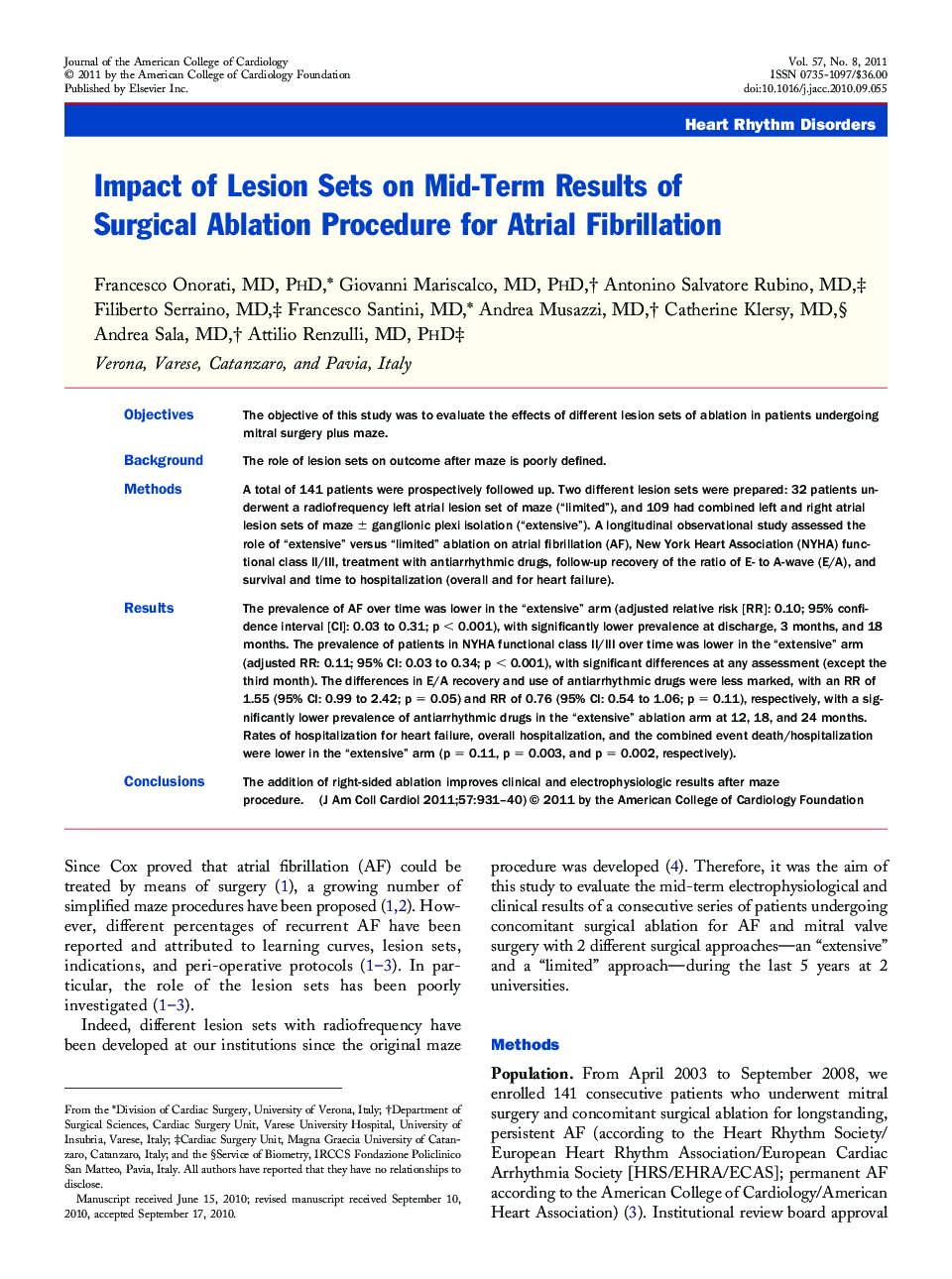| Article ID | Journal | Published Year | Pages | File Type |
|---|---|---|---|---|
| 2948635 | Journal of the American College of Cardiology | 2011 | 10 Pages |
ObjectivesThe objective of this study was to evaluate the effects of different lesion sets of ablation in patients undergoing mitral surgery plus maze.BackgroundThe role of lesion sets on outcome after maze is poorly defined.MethodsA total of 141 patients were prospectively followed up. Two different lesion sets were prepared: 32 patients underwent a radiofrequency left atrial lesion set of maze (“limited”), and 109 had combined left and right atrial lesion sets of maze ± ganglionic plexi isolation (“extensive”). A longitudinal observational study assessed the role of “extensive” versus “limited” ablation on atrial fibrillation (AF), New York Heart Association (NYHA) functional class II/III, treatment with antiarrhythmic drugs, follow-up recovery of the ratio of E- to A-wave (E/A), and survival and time to hospitalization (overall and for heart failure).ResultsThe prevalence of AF over time was lower in the “extensive” arm (adjusted relative risk [RR]: 0.10; 95% confidence interval [CI]: 0.03 to 0.31; p < 0.001), with significantly lower prevalence at discharge, 3 months, and 18 months. The prevalence of patients in NYHA functional class II/III over time was lower in the “extensive” arm (adjusted RR: 0.11; 95% CI: 0.03 to 0.34; p < 0.001), with significant differences at any assessment (except the third month). The differences in E/A recovery and use of antiarrhythmic drugs were less marked, with an RR of 1.55 (95% CI: 0.99 to 2.42; p = 0.05) and RR of 0.76 (95% CI: 0.54 to 1.06; p = 0.11), respectively, with a significantly lower prevalence of antiarrhythmic drugs in the “extensive” ablation arm at 12, 18, and 24 months. Rates of hospitalization for heart failure, overall hospitalization, and the combined event death/hospitalization were lower in the “extensive” arm (p = 0.11, p = 0.003, and p = 0.002, respectively).ConclusionsThe addition of right-sided ablation improves clinical and electrophysiologic results after maze procedure.
